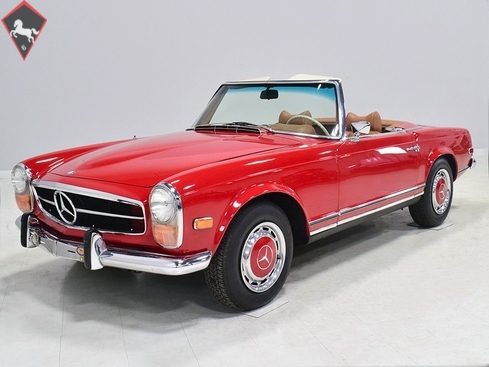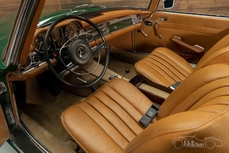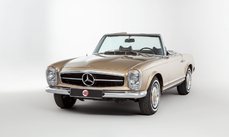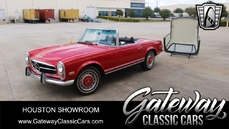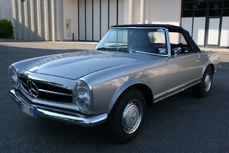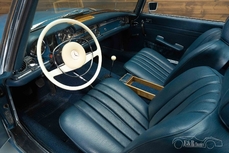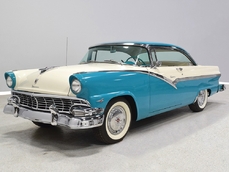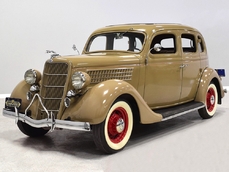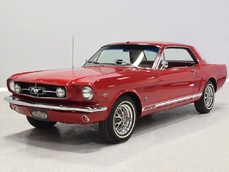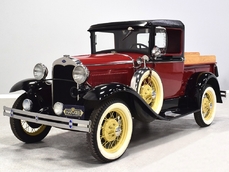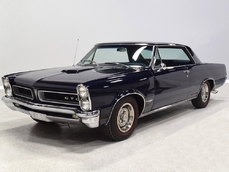Mercedes-Benz 280SL w113 2.8 liter inline-6 1969
Allgemeine Beschreibung :
It’s probably safe at this point to call Mercedes-Benz’s SL a legend. No other car embodies the two sides of Mercedes-Benz’s philosophy (performance and luxury) better, and with each successive generation, the SL improved on both aspects of its personality. For many, the W113 “Pagoda” SL represents the ideal combination of quality, performance, luxury, and all-around usability, and it’s hard to argue with that opinion. The Pagoda is beautiful to look at, bulletproof reliable, joyous to drive on challenging roads, yet it coddles its occupants like few other 2-seat convertibles of the period. Skyrocketing values are a result of two factors: the earlier 300SL is a seven-figure car and the Pagoda is a fantastic automobile in its own right. This 1969 Mercedes-Benz 280SL is a 50-year-old hobby car that can still be used every single day without feeling like you’re giving up comfort, convenience, or practicality. I can think of few other cars that can make that same claim.
This brilliant Signal Red SL has been in the same family for more than two decades and was treated to a cost-no-object restoration in the early 2000s. Subsequent to that, it won several national awards, including the AACA badges still visible on the front bumper. Standards have changed since then and it probably isn’t a 100-point show car today, but at the same time, it’s easily the finest Pagoda we’ve had in our inventory. Checking the fender tag, you will note that this car was originally code 423 Tobacco Brown, and we have photos from prior to the restoration when it was white, so it has been painted at least twice. The restoration corrected any imperfections in the sheetmetal and stripped it bare so that the Signal Red on the car today looks fantastic and reaches into all the nooks and crannies of the car. This was not an inexpensive respray, but a comprehensive restoration that started and ended with a complete car and is well documented in photos. The usual trouble spots like the rockers, rear valence above the exhaust outlets, and lower front fenders are all in excellent condition with no signs of trouble or botched workmanship. However, because the restoration was finished in 2004, the notches on the headlights and spot welds on the inner fenders were filled and smoothed, which was typical of the period. It does not mean this car was in a head-on collision with a truck; it simply means that when this was a $25,000 car with a $100,000 restoration, restorers treated these details as defects to be corrected rather than symbols of absolute authenticity. This is not a patched-together wreck but a very high-quality car.
The interior was likewise changed to tan in order to better contrast with the Signal Red paint, and we can’t argue with the choice. Virtually everything inside the car was new at the time of the restoration and shows very, very few signs of use today. Correct interior components from Bud’s Benz give it a very well-finished look and it all fits beautifully thanks to expert installation. The seats are firm and comfortable in the best German tradition, the ivory-colored steering wheel is beautiful, and even the wood atop the dash was fully refinished. You will note this car carries its original Becker Europa AM/FM radio as well as the Frigiking air-conditioner underneath, both of which are operational. All the gauges spring to life when you turn the key and only the clock seems to be inoperable. The 426 option code on the body tag indicates both power steering and a 4-speed automatic transmission, and the combination of A/C, power steering, and an automatic gearbox makes this SL a car you can still drive every day without feeling like you’re compromising. Extensive sound-deadening and insulation was added under the carpets to help this Pagoda feel quiet and comfortable and like all W113s, the structure is incredibly robust. Overhead there’s a beautiful tan canvas convertible top that fits superbly (we suspect we were the first ones to actually fold it into the well) and it includes the original hardtop, which is still white from that older repaint. The hardtop remains in very good condition but perhaps could use new weather seals on the windshield header.
We have detailed photos showing the 2.8 liter inline-6 being rebuilt during the restoration and it runs superbly today. We have every reason to believe this is the car’s original, numbers-matching engine and there’s a data card on order that will verify the information. It is neatly detailed and obviously, with its show wins, remains quite correct. It starts easily and runs quite well and you’ll find the performance enthusiastic and the sounds it makes are joyous. There’s a wonderful mechanical whirring from under the hood and the engine always feels like it’s on its toes, never seeming to run out of breath. It’s torquey, which is why they bumped displacement to 2.8 liters, and when combined with the quick-witted automatic transmission, it makes for a traveling partner that seems to respond to your inputs as quickly as you think of them. It also feels far more modern than a 50-year-old machine should and you’ll learn to trust the robust inline-six to keep you out of trouble on today’s roads. A 280SL is never a rolling road block like some of its contemporaries.
The aforementioned 4-speed automatic transmission is well-matched to the engine and while it’s not quite as smooth as a modern automatic gearbox, it feels precise in its actions and that’s the whole point. The SL wasn’t necessarily about pure isolation, but the way it goes about its business feels like an expensive precision machine. The suspension is incredibly supple and competent—there’s a broken patch of pavement and a set of railroad tracks near our shop and this SL just erases all that; it’s better, in fact, than my late-model Cadillac. Very impressive. 4-wheel disc brakes were standard equipment and the optional power steering on this car means that it’s user-friendly in any environment and with any driver behind the wheel. It’s nicely weighted and quite precise. There’s also a stainless steel exhaust system that gives it a wonderful baritone exhaust note. And while the Pagoda is notorious for rusting in the most demonic ways possible, this one retains all its original sheetmetal and you can easily see that the floors are clean, the rockers are excellent, and even the area below the rear bumper—a familiar spot for rust—is in excellent condition with no issues. It sits on steel wheels with color-matched hubcaps and 185/75/14 Goodyear radials with lots of life left in them.
Documentation is extensive, including a photo album of restoration photos and details on the awards this car has won. Those awards include:
• 1st place, Stan Hywet, 2003
• 2nd place, AACA Northern Chapter, 2003
• 1st place, MBCA Western Reserve, 2003
• 1st place, Stan Hywet, 2004
• 3rd place, MBCA National Meet, 2004
• 1st Place AACA Northern Chapter, 2004
• First Junior, AACA National Meet, 2004
• 1st place, MBCA Western Reserve, 2004
• 1st place, Stan Hywet, 2005
• Senior Award, AACA National Meet, 2005
• 1st place, MBCA Western Reserve, 2005
• Preservation Award, AACA National Meet, 2005
• Grand National First Prize, AACA National Meet, 2006
• 1st place, Stan Hywet, 2006
• Senior Grand National First Prize, AACA National Meet, 2007
This is an extremely high-quality SL and prices continue to march upwards with no end in sight. The driving experience is worth the price of admission and finding a car restored to this level is always a smarter choice than trying to upgrade an inferior car. Nicely sorted, great colors, and a strong pedigree make this a fine choice for the enthusiast who is ready to enjoy the good life. Call today!
http://www.harwoodmotors.com/vehicles/inventory_details.php?id=1035
1969 Mercedes-Benz 280SL w113 2.8 liter inline-6 is listed verkauft on ClassicDigest in Macedonia by for $99900.
Fakten der Auto
Karosserietyp : Auto Marke : Mercedes-Benz Modell : 280SL w113 Ausführung : 2.8 liter inline-6 Hubraum : 2.8 Modelljahr : 1969 Lage : Ohio
Verkauft
Angaben Zum Verkäufer
Verkauft
People who viewed this Mercedes-Benz 280SL w113 also viewed similar Mercedes-Benz listed at ClassicDigest
Other cars listed for sale by this dealer
über Mercedes-Benz
In den Annalen der Automobilgeschichte entfaltet sich die Reise von Mercedes-Benz wie eine Erzählung voller Ingeniosität seiner Gründer. Im Jahr 1886 schuf Karl Benz den Benz Patent Motorwagen, eine Kreation, die als das weltweit erste Automobil in die Geschichte eingehen sollte. Unwissentlich markierte dieser Moment den Ursprung dessen, was sich zu einem weltweit renommierten Premium-Autohersteller entwickeln würde. Die finanzielle Basis dieses bahnbrechenden Unternehmens wurde interessanterweise von Karls Ehefrau, Bertha Benz, bereitgestellt, was eine bemerkenswerte Partnerschaft demonstrierte, die den Ton für das Erbe von Mercedes-Benz setzen sollte.Nicht weit entfernt entstand eine parallele Erzählung, als die Daimler-Motoren-Gesellschaft, gegründet von Gottlieb Daimler und Wilhelm Maybach, die Bühne betrat. Im Jahr 1901 enthüllten sie ihr Auto unter dem mittlerweile berühmten Namen "Mercedes", was auf Spanisch "Geschenk Gottes" bedeutet. Dieser Name wurde auf das Auto auf Wunsch von Emil Jellineks Tochter verliehen, dem Vertriebspartner der Daimler-Motoren-Gesellschaft. Die Räder der Innovation wurden in Bewegung gesetzt.
Springen wir vorwärts ins Jahr 1926, ein entscheidendes Jahr, das die Fusion von Daimler mit Benz & Cie. sah, was zur Geburt von Daimler-Benz führte. Die Fusion führte zur Übernahme von "Mercedes-Benz" als das renommierte Markenzeichen für ihre Automobile und verschmolz die Legenden zweier visionärer Unternehmen zu einer.
Entgegen konservativen Wahrnehmungen entfaltet sich die Geschichte von Daimler-Benz als Chronik von Branchenneuheiten. Von der Einführung des Wabenkühlers über den Schwimmervergaser bis zur bahnbrechenden Einführung von Vierradbremsen im Jahr 1924 trieb Daimler-Benz kontinuierlich die Grenzen der automobilen Innovation voran. Der Dieselantrieb des Mercedes-Benz 260 D im Jahr 1936 markierte den Beginn von Dieselmotoren in Personenkraftwagen. Der ikonische Mercedes-Benz 300SL Gullwing schrieb Geschichte als das erste Auto mit direkter Kraftstoffeinspritzung, wenn auch der winzige 2-Takt-Motor des Gutbrod Vorrang beanspruchen kann.
Sicherheitsinnovationen wurden zum Markenzeichen, mit Béla Barényis patentiertem Sicherheitszellen-Design in den "Ponton"-Modellen im Jahr 1951, das Front- und Heck-Knautschzonen umfasste. Der W116 450SEL 6.9 führte die Einführung des Antiblockiersystems (ABS) ein, eine weitere wegweisende Sicherheitsfunktion. Vom ersten serienmäßigen Airbag bis hin zu vielen weiteren Innovationen wurde das Erbe der "Ersten" weiter in das Gewebe von Daimler-Benz eingeschrieben.
Auf seiner über hundertjährigen Reise hat Mercedes-Benz nicht nur Autos produziert, sondern automobile Ikonen geschaffen. Der SSKL, 710 SSK Trossi Roadster, 770K Grosser, 540K Spezial Roadster, 300SL Gullwing, W100 600 Pullman, W111 280SE 3.5 Flachkühler, W113 230SL Pagode, W109 300 SEL 6.3 und W201 2.3-16 Cosworth sind Zeugnisse des Engagements der Marke für Ingenieurkunst.
Die donnernden Silberpfeile, oder "Silberpfeile", darunter der W 25, W 125, W154, W165 und W196, schufen ein Erbe der Dominanz auf der Rennstrecke. Diese Maschinen waren nicht nur Autos; sie waren Ausdruck von Präzision, Geschwindigkeit und einem unbezwingbaren Geist, der die Konkurrenz im Staub zurückließ.
Während Mercedes-Benz in die Zukunft schreitet, tut es dies nicht nur als Automobilhersteller, sondern als Hüter eines Erbes, als Fackelträger der Innovation und als Leuchtturm automobiler Exzellenz. Der Weg in die Zukunft wird zweifellos die Fortsetzung der Verschmelzung von modernster Technologie, zeitlosem Design und dem unerschütterlichen Engagement für die Festlegung neuer Standards in der Welt der Automobile erleben.
